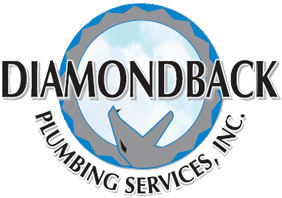Discovering a leak under your kitchen sink can quickly turn a good day sour. Thankfully, there’s nothing to worry about!
At Diamondback Plumbing, we’re here to guide you through the steps to troubleshoot this common household issue. Dealing with water in places it shouldn’t be can seem daunting at first.
However, with our expert advice and a bit of maintenance know-how, we’ll help you address the problem effectively and prevent future leaks. Stick with us as we explore the initial steps to take, allowing you to make the right choice when you face this slippery situation.
Common Causes of Kitchen Sink Leaks in Phoenix, Arizona
Some of the most common causes of leaks (particularly when it comes to kitchen sinks) include the following:
- Worn-Out Washers and Gaskets – Frequently, the culprit behind a drip or leak under the sink is a washer or gasket that has worn out over time. These components are crucial for forming watertight seals in your plumbing fixtures.
- Loose Connections in Pipes – If you’re noticing water, it might be due to loosening connections in your pipes. Regular usage and the disposal vibration can cause fittings to gradually lose their tightness.
- Corrosion in Pipes or Fittings – Metal pipes and fittings can corrode over time, leading to leaks. This corrosion is often a result of chemical reactions between the water and the metal, making some parts of your plumbing system vulnerable to leaks.
- High Water Pressure – While not immediately apparent, high water pressure can harm your plumbing. It can lead to leaks by placing extra stress on your pipes and connections, especially at weak points like washers and gaskets.
Identifying the Source of the Leak
Identifying the source of a leak under your kitchen sink requires patience and a keen eye. Begin with a visual inspection, looking for obvious signs such as water pooling, drips, or corrosion on pipes and fittings. It’s helpful to clear the area under the sink to get an unobstructed view.
Visual Inspection
Start by drying the area thoroughly with a towel. Then, run water through the sink and observe where the water appears. Sometimes, the source of the leak is immediately apparent, such as a constant drip from a connection or a visible crack in a pipe.
Understanding the Signs of Different Leaks
Different types of leaks present themselves in various ways. For instance, a leak at the base of the faucet usually indicates worn out gaskets or washers. On the other hand, if you notice water leaking only when you use the sink, the issue might be with the sink drain assembly. Familiarizing yourself with these signs can help you pinpoint the problem more accurately.
Using Dry Tissue Paper
Dry tissue paper can be an invaluable tool for smaller leaks that are not immediately visible. Wrap dry tissue paper around each connection point under the sink. Turn the water on and observe. The tissue paper will quickly become wet at the exact location of any minor leaks, making them easier to identify.
By following these steps with patience and attention to detail, you can accurately identify the source of a leak under your kitchen sink. Remember, correctly identifying the leak is the first and most crucial step in the troubleshooting process.
Step-by-Step Instructions For Repairing a Link Under Your Kitchen Sink
Here’s a quick guide that you can use to deal with that stubborn leak under your kitchen sink once and for all:
- Turn Off the Water Supply – Before starting any repair work, it’s crucial to turn off the water supply to prevent flooding. Look for the valve under the sink and turn it clockwise to shut it off.
- Empty the Sink Cabinet – Clear out the area under the sink to create space for your work. This will make it easier to identify and fix the leak without obstructions.
- Tighten the Connections – Gently tighten any loose connections using an adjustable wrench. Make sure that you keep the connections manageable, as this could damage the fittings.
- Replace Worn Out Washers and Gaskets – If you’ve identified that the leak is due to worn-out washers or gaskets, replace them. Make sure to purchase the correct size and type for your fixture.
- Apply Plumbing Tape – For threaded connections, applying plumbing or Teflon tape can help seal the joint and prevent leaks. Wrap the plumbing tape around the threads clockwise before reattaching the fitting.
- Check for Corrosion – Inspect pipes and fittings for signs of corrosion. If you find corroded parts, replace these sections. This task can be complex, so consider contacting a professional if needed.
- Test Your Repair – Once the repairs are completed, turn the water supply back on. Run water through the sink and observe for any leaks. If there are no leaks, tidy up your workspace and return items under the sink.
- Monitor the Area – Keep an eye on the repaired area over the next few days to ensure the leak does not return. Sometimes, issues may reappear after temporary fixes. If so, contact a professional plumbing service to handle the leak.
Conclusion
If, after following these steps, the leak persists or you’re unsure about any part of the repair process, it’s advisable to contact a professional plumbing technician. Leaks can lead to significant water damage over time, so an expert’s intervention can save you from future headaches.
Remember, there’s no shame in seeking professional help; ensuring your home’s plumbing is functioning correctly is crucial.
At Diamondback Plumbing, we’re committed to providing you with the knowledge and support necessary to tackle home plumbing issues. However, we also understand the importance of professional intervention when repairs go beyond DIY solutions. Give us a telephone call today if you need help tackling the leak underneath your kitchen sink.
